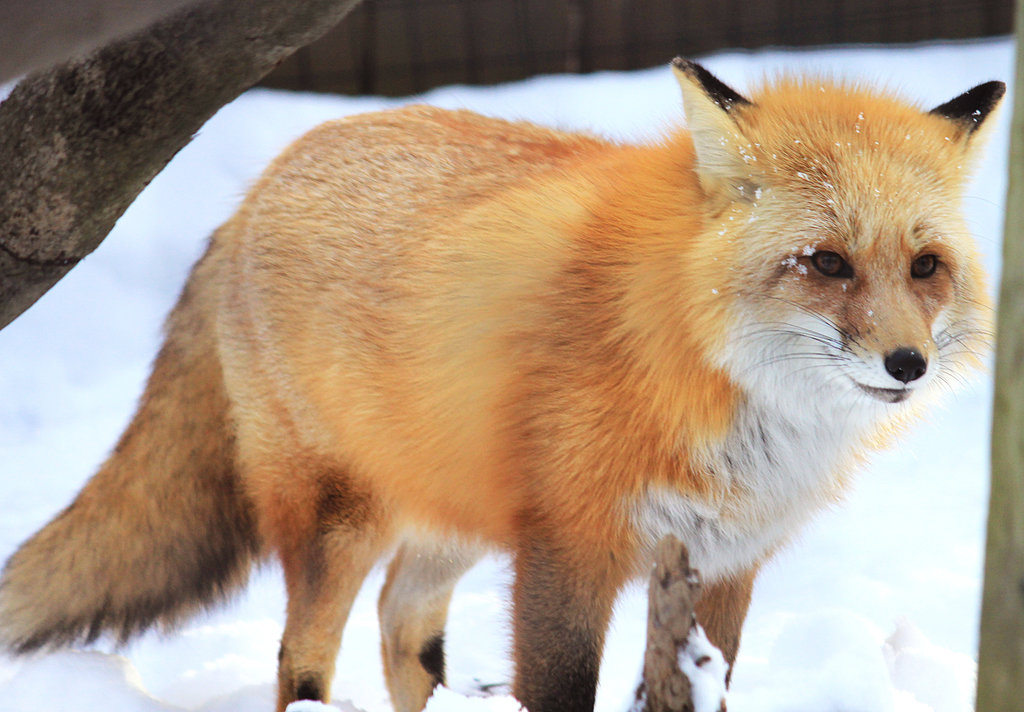
This is an excerpt from Andrew Lewand’s article “Seeing Red,” which appeared in the January 2014 Trapper & Predator Caller issue.
By Andrew Lewand
Most red fox hunters rely on prey distress sounds for their calling efforts. The truth is that certain sounds are more effective than others. Some sounds prove to be too tempting to the keen ear of a fox.
Mouse/Rodent Squeaks
Even deer hunters know that the simple “squeak” is effective to bring in a fox that happens to be moving through the woods. Who here among us hasn’t puckered up and squeaked in an attempt to get an opportunity to take a prime red fox with their bow while on stand for white-tailed deer? Well, that same sound can be deadly while purposely calling to foxes as well.
On calm nights, I start each predator stand with the subtle sounds of mouse squeaks. Whether the sound is produced by an electronic call, a push-type rubber call or by “kissing” the back of your hand, the sound can be heard for hundreds of yards, and any foxes that happen to be in the vicinity will come to investigate. All serious fox hunters need to add this sound to their repertoire.
Rabbit Sounds
Since the plentiful rabbit is a staple of the red fox diet, many hunters feel compelled to use rabbit sounds while calling. I, too, use rabbit sounds, but have determined that some rabbit distress sounds perform better than others.
My hunting log shows that 90 percent of the red foxes that I killed coming to rabbit distress sounds came to FOXPRO’s Baby Cottontail sound. At first, I did not know how I felt about the sound. However, upon realizing that the foxes were responding so well to it, I now use it with a high degree of confidence.
Another excellent rabbit distress sound is FOXPRO’s Snow Shoe Distress #1. Although snowshoe hares might not actually be indigenous to your calling area, the sound works very well at luring in red foxes.
Going to the Birds
Since most hunters opt to use some sort of rabbit distress, it might help to use some alternative sounds. Red foxes, like coyotes, can become educated to certain sounds and ignore them if they associate them with negative situations, like being shot at. This is where bird distress sounds come in so handy.
There are many bird sounds available to hunters who own electronic calls. Hand-call users can roll their tongues as if blowing into open- or closed-reed calls and produce the sounds of a bird in peril. The sounds that work best for me come from the FOXPRO library. The Wail n’ Woodpecker, Titmouse Tantrum and Ranting Red Bird sounds all prove to be deadly. Each of these sounds is high pitched, and that seems to lure the red foxes. In my experience, these sounds are most effective when played continuously and at a medium sound level during calm conditions.
Speak Their Language
While using distress sounds is all the rage for targeting red foxes, another type of calling is becoming popular — fox vocalizations. For several years now, I have been advocating the use of mating barks and howls to bring in red foxes. These sounds can be found with a simple Internet search and downloaded onto a digital call.
When using fox vocalizations, I first play a fox howl (or wail) in an attempt to locate foxes vocally. Foxes will typically bark in response to the howl. I then play the three-syllable mating barks. Only play a few and listen for a response. Hopefully, a fox will answer your barks. Then you can call back and forth with the fox. It is fun to listen to the sound of the barking fox as it gets closer to your setup. Prepare for the shot because the fox will appear quickly, and you don’t want to be caught off guard.
Andrew Lewand’s full story appeared in the January 2014 issue of Trapper & Predator Caller.
You can pick up a copy of the digital issue on www.ShopDeerHunting.com. Or if you’d like to subscribe to Trapper & Predator Caller, please visit the subscription page on our website.

